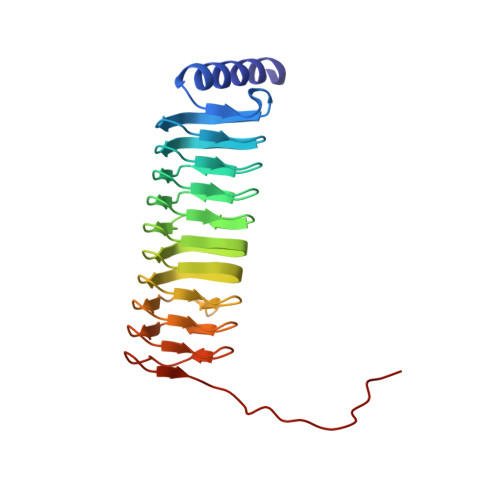In Vitro Validation of Acetyltransferase Activity of GlmU as an Antibacterial Target in Haemophilus influenzae.
Buurman, E.T., Andrews, B., Gao, N., Hu, J., Keating, T.A., Lahiri, S., Otterbein, L.R., Patten, A.D., Stokes, S.S., Shapiro, A.B.(2011) J Biological Chem 286: 40734-40742
- PubMed: 21984832
- DOI: https://doi.org/10.1074/jbc.M111.274068
- Primary Citation of Related Structures:
3TWD - PubMed Abstract:
GlmU is a bifunctional enzyme that is essential for bacterial growth, converting D-glucosamine 1-phosphate into UDP-GlcNAc via acetylation and subsequent uridyl transfer. A biochemical screen of AstraZeneca's compound library using GlmU of Escherichia coli identified novel sulfonamide inhibitors of the acetyltransferase reaction. Steady-state kinetics, ligand-observe NMR, isothermal titration calorimetry, and x-ray crystallography showed that the inhibitors were competitive with acetyl-CoA substrate. Iterative chemistry efforts improved biochemical potency against gram-negative isozymes 300-fold and afforded antimicrobial activity against a strain of Haemophilus influenzae lacking its major efflux pump. Inhibition of precursor incorporation into bacterial macromolecules was consistent with the antimicrobial activity being caused by disruption of peptidoglycan and fatty acid biosyntheses. Isolation and characterization of two different resistant mutant strains identified the GlmU acetyltransferase domain as the molecular target. These data, along with x-ray co-crystal structures, confirmed the binding mode of the inhibitors and explained their relative lack of potency against gram-positive GlmU isozymes. This is the first example of antimicrobial compounds mediating their growth inhibitory effects specifically via GlmU.
- AstraZeneca R&D Boston, Infection Innovative Medicines Unit, Waltham, Massachusetts 02451, USA. Ed.Buurman@astrazeneca.com
Organizational Affiliation:


















